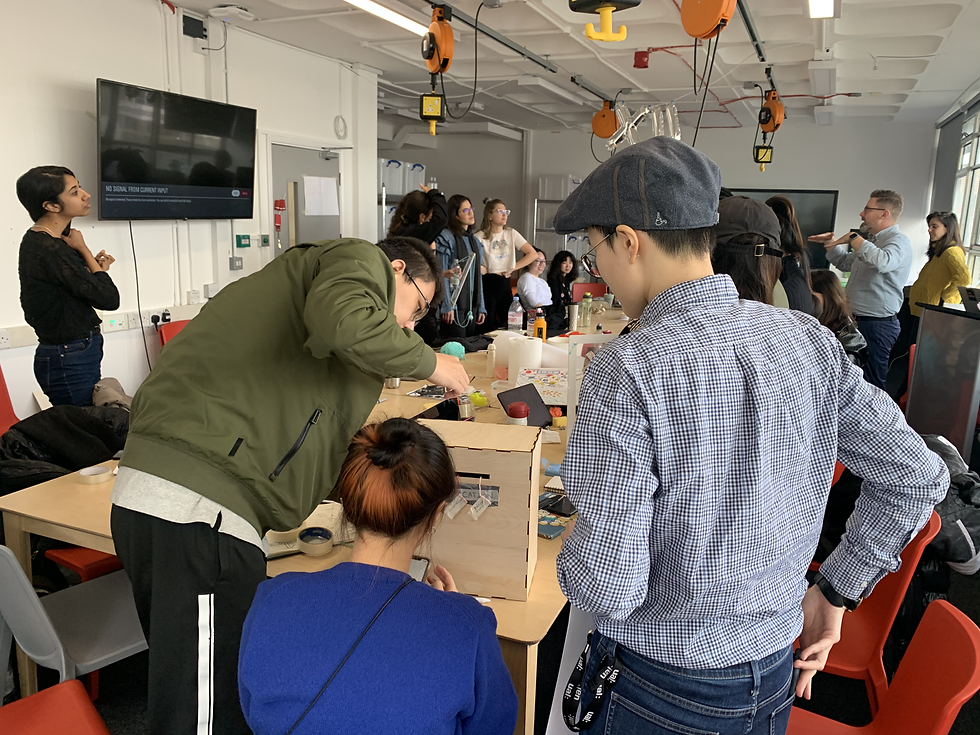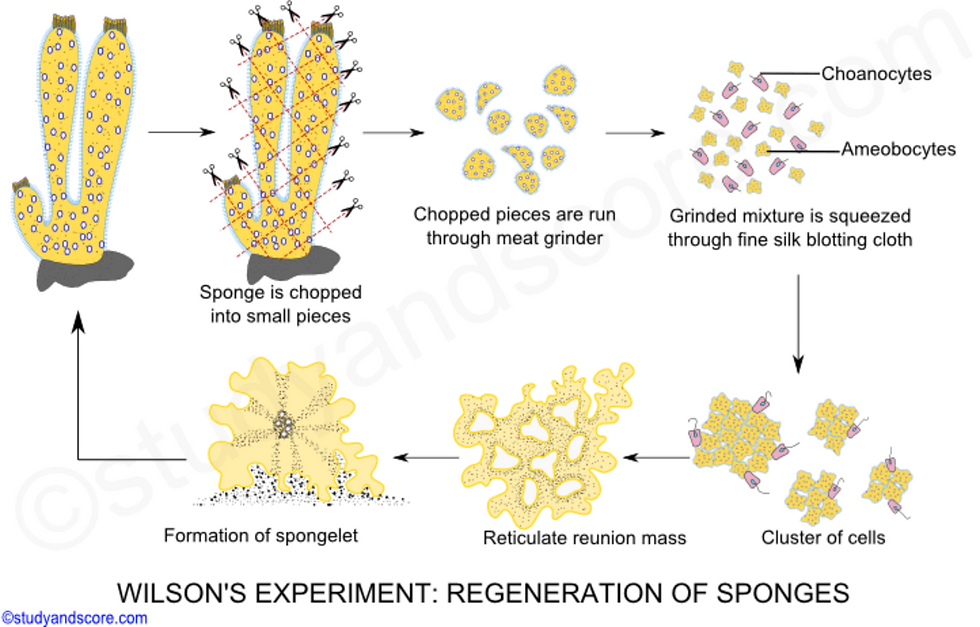[WEEK 16] Collaboration: Post-humanism design
- Lijun LI

- Feb 17, 2020
- 5 min read
Updated: Mar 16, 2020
Teammates: Winnie, Yuki, Chengguang, Lili
This week, our course held a workshop with a professor from the University of Washington, Tyler Fox. In this session, we were going to design for the non-human, according to the post-humanism definition: Posthumanism is a philosophical perspective of how change is enacted in the world. As a conceptualization and historicization of both agency and the “human,” it is different from those conceived through humanism.
This world has a massive human-centered design, like Forlano(2017) said since at least the mid-1980s, the design has been dominated by a human-centered and user-centered paradigm. But this time we were going to design for a non-human.
INTRODUCTION
We first started with Dr.Tyler 's works and some basic terms post humanism design
like human-enhancement and superjects and so on.
After the introduction about this workshop, the teacher asks us to make a physical diagram of a prehending phone, used by a user focus on one phone prehension.

When we looked at our phone, Winnie said those little red spots on the right upper corner are quite disrupting.
So we chose Push Notifications System, but how to present it in a clever way and demonstrate it properly?
As far as we know, the machine is learning by itself, by reconding the times you tap on the screens.
We divided the notification into 3 categories, they are social media, entertainment, and political news, the length of the string means the frequency of you browse related websites, as the string long enough, the flag on the backside will pop up, means the notification has been sent to your phone, if you don't want to read it you can knock it down. In a way, this method implies the machine's self-learning ability and human subjectivity.
DESIGN FOR NON-HUMAN

As it required us to think beyond human, the object we got is a natural sponge. Wikipedia said that the sea spongs are one of the oldest creatures on this earth, and they are half animal and half plant so as the coral.
Every day, a sea sponge can filter between two and 20 cubic meters of water per kilogram of body weight, and researchers are studying the possibility of using them on an industrial scale in a process known as bioremediation – where organisms are used to remove pollutants
By the 1950s, though, these had been overfished so heavily that the industry almost collapsed, and most sponge-like materials are now synthetic.


When it leaves the sea to enter the human world will be used for clean, sometimes decorations.
There is a line between living and dead even the life features of the sea sponge are very week.
In this prototype, we illustrated two life statues of sea sponge, the human world context and marine context, showing two distinct live statues of sea sponge as a creature or an object.
Left: In the human world context
we use soap water to intimate the washing process.
Right: In the marine context
Yuki got a bowl of blue liquid, to act like seawater, also we add some odd things like jellyfish and octopus even breathing audio.
RESEARCH
The Sea Sponge is a renewable natural resource.
When sponges are harvested, the sponge divers hand cut each sponge to ensure that more than one inch of the base remains intact. The sponge then re-grows back to its original form within 3-5 years. also, Natural Sea Sponges possess remarkable powers of regeneration. Broken of bits of sea sponge is carried by off by water currents and has the ability to settle in another location and re-grow into a clone of the parent sponge.
Studies show that areas harvested actually increase the population density of sponges.
The Florida Fish & Wildlife Conservation Commission regulates the commercial and recreational take of sea sponges and through a series of 'crop/harvest rotation', ensure that the harvest of sea sponges never impacts surrounding ocean species.

Sponges live in all types of regions all over the region.
They are able to thrive in most environments. 99% of all sponges live in marine water, but some sponges made of spongin fiber live in freshwater. Sponges can be attached to surfaces anywhere as deep as 8km in the ocean on the bottom of the ocean floor.
IDEATION
As we need to design for sponge, we thought about the needs of sponges, this is the most difficult part, as a human, it is tricky to think as a sponge, there is always something could not be abandoned as being a human for so many years. Like Thomas Nagel argues that while a human might be able to imagine what it is like to be a bat by taking "the bat's point of view", it would still be impossible "to know what it is like for a bat to be a bat."
By doing research we know sponges bring a lot of advantages to the marine world, and human world, however, they take so little, the process of they eating is also the way they filter the water. So many benefits they bring to the earth, so what we can bring to them, it reminds me of the flood of technology, only mankind knows how to use it, can we also Let sponges also take advantage of it.
Yuki came with some fun ideas like "Tinder", "Booking", "Uber" for sponges, let sponges worldwide. According to the research, they don't have that many requirements about the living conditions and do not have trouble growing up with just a part of their body. As most of them will stay in one place for thousands of years, we want to help it travel and grow in another ocean so that it can also have the water quilty of another area of water.
OUTCOME

We aimed at let sponges travel worldwide, to the different oceans
Ths installation was divided into two parts (oceans).
This installation was divided into two parts,
1. We designed food for the sea sponges, and that food already have Engines and positioning system (GPS) and nutrition that spongs need.
2. When we put the food through the tube, the light is on which means the sponges are digesting, but the engines are supposed to take sponges to travel worldwide, so they will stay in sponges’ bodies.
3. According to the research, one inch of the base should remain intact, so the upper part will push by engines to another ocean, and grow in there.
REFLECTION
Towards this workshop, there are still lots of question hovering in my mind, as we acknowledged this world is not human-centered, so is it necessary for us to design for non-human creatures or objects, human activities expanded to the range of other animals, do those animals really expect human to design for them or maybe desire less interrupting? We will never know, all we can do is observe from their behaviors and judge based on human experiences since we will never know what are they thinking about, for example, the crocodile tears.
There are too many designs nowadays, some of them may full of subjective, and designers are going beyond and aesthetic problem-solving part, but the larger the scale, the greater task, like global warming, so if we cannot abandon something we take for granted, there will be many useless designs in the world.
REFERENCE
Forlano, L. (2017). Posthumanism and design. She Ji: The Journal of Design, Economics, and Innovation, 3(1), 16-29.
Nagel, T. (1974). What is it like to be a bat?. The philosophical review, 83(4), 435-450.
Campbell, Neil A. and Jane B. Reece. Biology. 6th ed. Toronto: Pearson Education Inc as Benjamin Cummings, 2002. pg 636-637, 647-648.














![[WEEK 17 ] Collaboration: Green-Lab](https://static.wixstatic.com/media/0d71c6_5e9986d7e42e4ee6858527b6a46f551c~mv2.jpg/v1/fill/w_980,h_551,al_c,q_85,usm_0.66_1.00_0.01,enc_avif,quality_auto/0d71c6_5e9986d7e42e4ee6858527b6a46f551c~mv2.jpg)
Comments